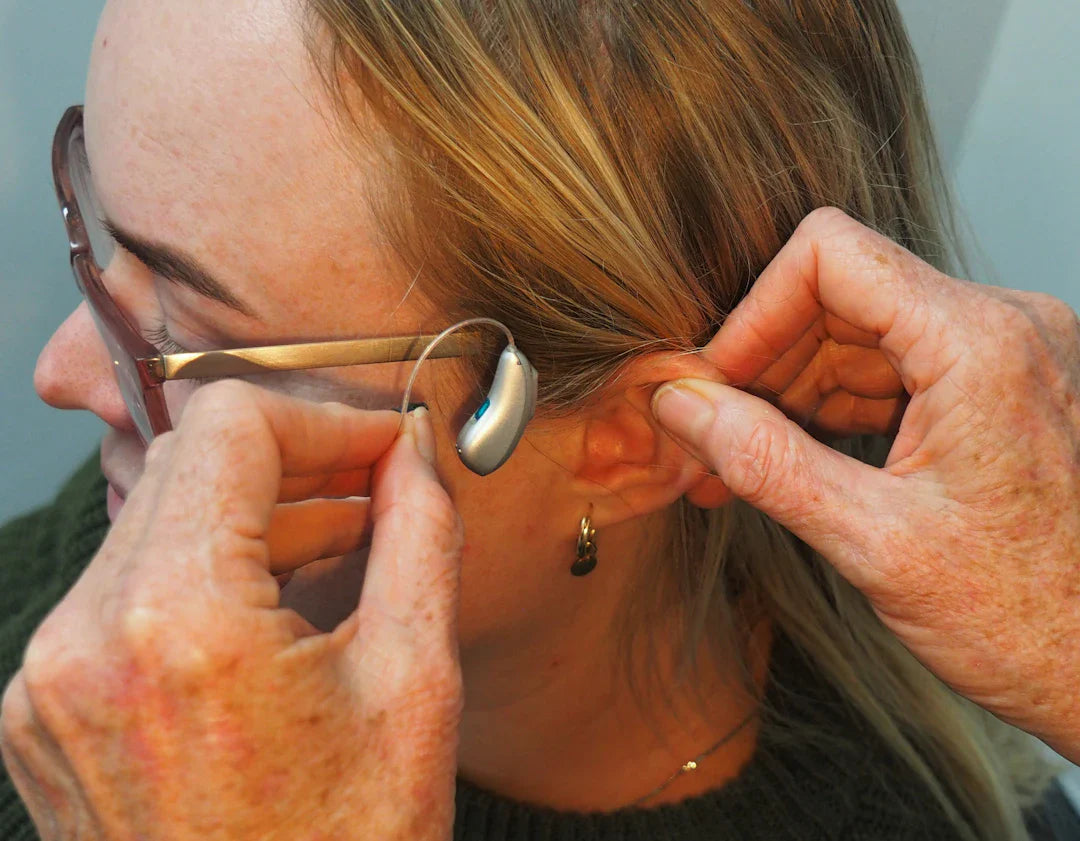Effective communication is vital in any relationship, and when you are interacting with someone who has hearing loss, it can be particularly challenging. Whether you are speaking to a family member, friend, or colleague, understanding how to adjust your communication style can significantly improve the exchange and help foster a deeper connection. This article offers valuable tips on how to communicate efficiently and empathetically with individuals who have hearing loss, including those who might benefit from innovations like the Phonak Slim L50 features.
Understanding Hearing Loss: More Than Just a Sound Issue
Hearing loss is a complex condition that can manifest in various ways. It might affect one or both ears and can range from mild to profound. Simple adjustments in how you communicate can make a world of difference to someone experiencing this condition. Here are some essential strategies to facilitate better communication.
Be Mindful of Your Environment
The setting in which you are communicating plays a crucial role in how effectively someone with hearing loss can engage in the conversation. Here are several considerations:
- Reduce Background Noise: Sounds from radios, televisions, and other conversations can create distractions. Strive for a quieter environment, allowing for greater focus.
- Use Appropriate Lighting: Effective communication often relies on visual cues, including facial expressions and lip movements. Ensure that the lighting is adequate while maintaining a clear view of your face.
- Avoid Busy Environments: Restaurants and crowded places may be fun, but they can make conversations nearly impossible for someone with hearing loss. Choose calm settings when engaging in important discussions.
Effective Speaking Techniques
How you speak can greatly influence how well your message is received. Implementing effective speaking techniques can help bridge the gap in communication.
Articulate and Enunciate
When speaking to someone with hearing loss, clarity is key. Here are some tips to enhance clarity:
- Speak Clearly: Enunciate your words without exaggerating. A moderate pace is helpful for comprehension.
- Avoid Speaking Too Loud: While raising your voice may seem like a logical solution, it can actually distort sounds and make it harder to understand.
- Use Simple Language: When possible, choose straightforward language over jargon or complicated phrases, as these may be more difficult to comprehend.
Utilise Non-verbal Communication
Non-verbal cues can enhance understanding and offer context to your words, especially in conversations where hearing loss plays a role.
- Facial Expressions: Maintain friendly and supportive facial expressions that align with your message.
- Gestures: Use hand signals and gestures to reinforce your spoken words, helping to convey your meaning more effectively.
- Eye Contact: Keep eye contact to show engagement and encourage the other person to focus on your lips and facial movements. This connection can improve understanding.
Incorporating Technology
Modern technology has made great strides in improving communication for those with hearing loss. Devices such as hearing aids have evolved significantly, with models offering advanced features. For instance, the Phonak Slim L50 features provide enhanced sound quality and clarity, enriching the listening experience.
Encourage the Use of Hearing Aids
Hearing aids are not merely technical devices; they are tools that empower individuals to engage more fully in conversations. Here’s how you can support their use:
- Be Understanding: Encourage your loved one to wear their hearing aids consistently, especially during discussions. Emphasising the importance can help them appreciate their role.
- Assist in Adjusting Settings: If someone is comfortable with technology, help them adjust the settings on their hearing aids based on the environment, be it at home or out.
- Stay Updated: Encourage them to explore new models that may offer better features, like the Phonak Slim L50 features, enhancing their communication capabilities further.
Active Listening: The Other Half of Communication
Effective communication is not just about how you speak; it's also about how attentively you listen. Active listening is an essential skill that can make conversations smoother and more productive.
Show Patience and Understanding
When conversing with someone with hearing loss, patience is key. Consider the following:
- Be Empathetic: Understand that they may not catch every word. Be patient if they ask for clarification or if the conversation requires repetition.
- Acknowledge Their Efforts: If they are striving to engage, appreciate their efforts and encourage them to keep participating.
- Ask Questions: After making a point, ask open-ended questions to ensure they understood and to make the conversation more interactive.
Practice Inclusivity in Group Settings
Large group conversations can be daunting for individuals with hearing loss. Here’s how to make group discussions more accessible and inclusive:
Be Mindful of Turn-Taking
In group settings, implement simple ground rules to ensure everyone can be part of the conversation:
- Use a One Speaker at a Time Rule: Avoid interrupting others while they are speaking, as this can create confusion and make it difficult for everyone to follow.
- Facilitate Discussions: If someone appears to be struggling, encourage group members to summarise or provide clarification to enhance comprehension.
- Provide Visual Aids: Whenever possible, supplement verbal discussions with written notes or slides to enhance understanding.
The Power of Feedback
Constructive feedback can play a vital role in creating a supportive communication environment. Here’s how feedback can help:
Encourage Open Dialogue
It's essential to foster an environment where individuals feel comfortable sharing their needs and preferences:
- Ask for Preferences: Encourage those with hearing loss to share how they prefer to communicate—whether they prefer written notes, simpler language, or other means.
- Request Feedback: After conversing, ask if they felt included and understood, helping identify areas for improvement in future discussions.
- Adapt and Improve: Be willing to adapt your communication approach based on feedback received, making each interaction more successful than the last.
Building Stronger Connections
Ultimately, improving communication with someone who has hearing loss is not just about making adjustments; it is also about building more meaningful relationships. Here are a few strategies to encourage deeper connections:
Invest Time in Understanding Their Perspective
Taking the time to understand their experience can pave the way for better communication:
- Learn about Hearing Loss: Take the initiative to research and understand the nuances of hearing loss. This information can empower your interactions.
- Share Experiences: Openly share stories and emotions related to hearing loss, creating a more personal and engaging dialogue.
- Stay Positive: Focus on creating an uplifting atmosphere, even if challenges arise during conversations. Positivity can significantly enhance communication.
Communicating effectively with someone who has hearing loss requires sensitivity, patience, and a willingness to adapt your approach. Each conversation can indeed be an opportunity to learn and grow as you develop deeper connections. By incorporating these tips and making use of modern advancements in hearing technology, like the Phonak Slim L50 features, we can create an inclusive space where everyone feels valued and understood. So, let's continue fostering open lines of communication and cherish the moments spent connecting with one another—because understanding is the true essence of connection!




